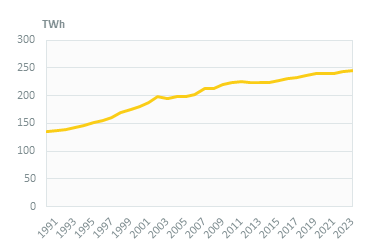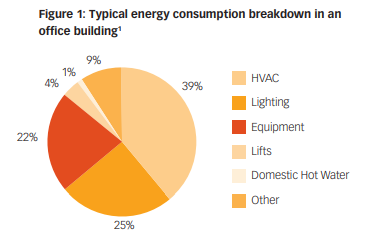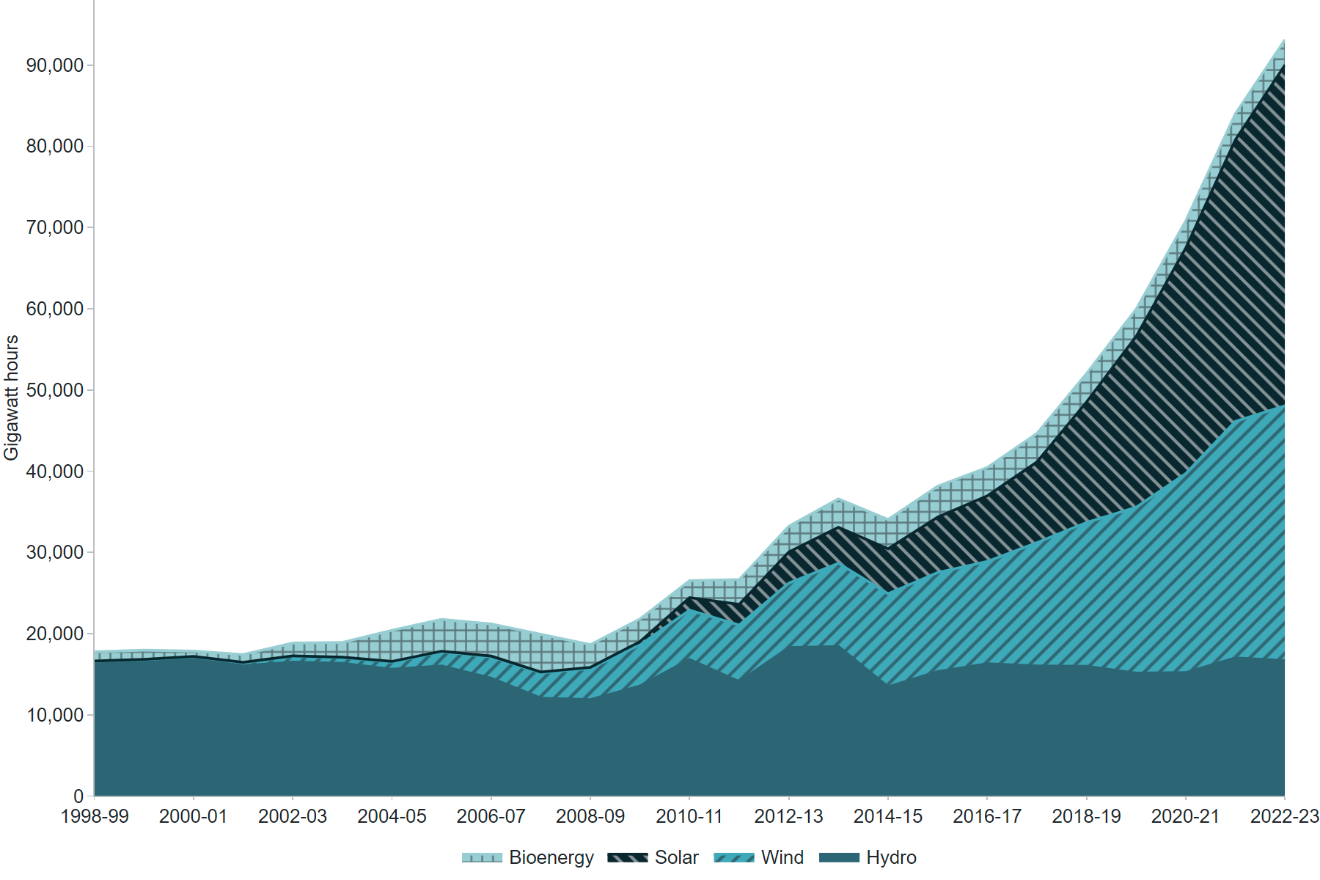Electrical wiring and systems are critical to the functionality and efficiency of commercial spaces and office buildings. Proper installation keeps you safe and ensures compliance with regulations.
This article will explore current Australian statistics and trends and how companies can use industry-specific professional advice.
Local Electrician Sydney provides home and commercial clients with safe and efficient electrical solutions. We specialise in several forms of electrical work crucial to electrical systems’ safety and performance.
Moreover, we offer many essential services, including handling emergency electrical problems. We know how to identify and solve issues like flickering lights, burnt-out outlets, overloaded circuits, and more.
Overview of Australian Commercial Electrical Usage
Historical vs Current Trends
The landscape of commercial power consumption in Australia has changed significantly over the past decade as consumption patterns shifted, new technology offered alternatives, and energy policy has evolved.
Annual trends in electricity consumption by sector in Australia 2013-2023 Total electricity consumption throughout the NEM in 2023 was around 188 terawatt hours (TWh), a statistic concealing diverging consumption trends across various industry sectors.
In 2023, renewables comprised approximately 29% of Australia’s electricity generation, a considerable increase from the previous years.
Australia’s total electricity consumption has consistently risen, with total use in 2023 at approximately 245 TWh. That would mean a total increase of 2.2%, translating into an average annual growth of 0.5% between 2015 and 2023, as shown in the graph below.
Australia Electricity Consumption
Source: Enerdata
Office Consumption Breakdown
The average energy usage spread of Australian commercial buildings is as follows:
Heating, ventilation, and air conditioning (HVAC): These systems consume 39% of energy in commercial buildings because they supply thermal comfort to building occupants.
Lighting: It constitutes a significant 25% share of energy utilisation, corresponding with operational hours, lighting technologies, and other life-cycle impacts.
Office Equipment: Office gear encompasses PCs, printers, copiers, and electricity-powered alternative gadgets that use 22% of energy.
Server Rooms: While server rooms make up only 4% of total energy consumption, these facilities are crucial for businesses that depend on data management and internet connectivity.
Other parts (including elevators and various equipment): The other consuming sectors (lifts, miscellaneous equipment, etc.) do not represent a significant part but are nevertheless part of commercial building’s total energy usage profile, using only 1%.
Source: environment.gov.au
Factors Influencing Growth
Population Changes: As the population grows, more homes require more energy for lighting, heating, and appliances. This demand is even more pronounced in cities, where population density means greater energy consumption on a collective level.
Economic Shifts: Electricity consumption in all sectors typically increases with economic growth. As business expands and industry activates, they consume an increase in energy, contributing to climbing electric statistics.
Tech Developments: Advancements such as energy-efficient appliances, lighting (e.g., LED), and architectural designs that reduce the need for heating and cooling and energy consumption help lower numbers despite overall usage potentially growing for other reasons.
Smart meters and automation systems enable consumers and businesses to monitor and optimise their energy use, which may result in changes in aggregate consumption statistics.
Common Electrical Issues in Offices
Electrical problems in offices can cause safety hazards, lack of productivity, and expensive fixes. Below are the most common electrical problems in the workplace:
Overloaded Circuits
Over-timed office work leads to overloaded circuits, a common electrical issue. This is when the electricity demand exceeds the circuit’s capacity, which can result in power outages and are prone to start fires.
Lighting Inefficiencies
The problem with old fixtures, like fluorescent and halogen bulbs, goes beyond inefficiency. They bring big problems with energy, employees’ health and environmental safety.
IT and Server Room Challenges
Electrical issues within IT and server rooms can adversely affect operations, resulting in data loss, equipment damage and higher costs in the long run. Server rooms containing sensitive equipment depend on the supply of stable electrical current.
Energy Waste and High Bills
Substandard office layouts and underuse of electrical systems can significantly inflate energy bills through poor space utilisation, ineffective HVAC control, inefficient electrical loads, and negative employee behaviours.
Safety and Compliance Trends
Australia has undergone some recent adjustments to legislation about electrical safety, and the focus is moving towards more stringent electrical safety in commercial and office environments.
Australian Electrical Standards
Australian Electricity standards provide a complete set of guidelines for installing, maintaining, and operating commercial electrical systems.
AS/NZS 3000 (Wiring Rules): This standard provides requirements for the design, construction and verification of electrical installations, including wiring methods, protective earthing system and equipment selection, to minimise electrical danger.
Electrical Safety Act 2002: This law sets safety obligations for electrical work and requires compliance of all electrical installations to the AS/NZS standards.
Electrical Regulatory Authorities Council (ERAC): The ERAC regulates the development and application of the safety standards for the electrical section to support the national safety objective.
Recent Policy Updates
Significant changes and/or proposals in the commercial property legislative space that owners, particularly concerning electrical safety and compliance requirements, are about to see as a reality.
Electrical Safety and Other Legislation Amendment Act 2024
The act commenced the Electrical Safety and Work Health and Safety Act 2011. It amends existing legislation to improve electrical compliance and the safety standards of commercial buildings.
Its purpose is to enable better oversight and compliance by requiring electrical contractors to report specific activities to the Electrical Safety Office within ten business days, including changes in the qualification of electrical workers, from this date onward.
Proposed Updates to National Construction Code (NCC) 2025 Public Comment Deraft
The National Construction Code (NCC) 2025 features the new commercial electrical safety provisions that would apply to the entire electrical system in new commercial buildings in response to sustainability efforts and reduction of carbon footprints.
NCC will enforce tighter requirements on safety and operational health. Demands for electrical work should meet wider safety standards and more rigorous performance expectations.
Importance of Regular Inspections
Routine maintenance checks and adherence to electrical safety standard protocols minimise liability in commercial and office situations. Standard monitoring helps businesses identify normal wear and tear on electrical systems before they turn into expensive repairs or replacements.
Moreover, regular inspections help business owners take preventive actions and keep them updated on any legal requirements if the monitors are deployed promptly.
Penalties & Risks
Non-compliance with the electrical safety standards will result in legal sanctions, increased chances of fires and greater potential liability.
Financial Penalties: The Electricity Safety Act and the supporting regulations provide significant penalties for violating those provisions. An individual offender may be fined up to a minimum of $160 per penalty unit for identical violations, while a corporation may be fined up to $810 per penalty unit. More serious violations could lead to larger fines corresponding to the offence.
Penalties: You could face financial penalties due to your failure to comply. Judicial enforcement and resulting fines can also occur for property owners and contractors that do not comply with electrical safety codes — significant in accord with degrees of negligence.
Electrical Fires: Faulty wiring, aging equipment, and erroneous installations can all cause electrical fires. In fact, 87% of workplace electrical fires are caused by mechanical or electrical failure, misplaced combustible materials, or overloaded equipment.
Latest News and Developments
Emerging technologies encompassing office electrical systems are revolutionising the face of the electrical industry in Australia. These innovations set a precedent for smarter office spaces by focusing on automation, sustainability, and efficacy.
Emerging Tech in Office Electrical Systems
Smart building technologies are transforming the design and management of electrical systems in commercial facilities.
Automation Technologies: Advanced automation systems optimise energy consumption through responsive lighting, heating, and cooling systems.
Internet of Things (IoT): IoT devices are helping to integrate various office systems, which allows for communication between electrical components. This helps drive smart management of office resources like energy consumption and equipment monitoring.
Energy Storage & Renewables
In 2023, renewable energy sources provided 35 per cent of Australia’s total electricity generation, including solar (16 per cent), wind (12 per cent) and hydro (6 per cent). The attached figure shows Australian electricity generation on renewable sources (in gigawatt hours) from 1998-1999 to 2022-2023.
Source: DCCEEW
Solar Energy Technology: Many offices are now working to install solar panels, which offer a more sustainable energy solution from the grid. Such a transformation lowers the operational costs and drives larger environmental objectives down the line.
Battery Storage Systems: When enhanced with solar energy, the mass battery storage system allows offices to accumulate excess energy during less used hours and utilise it during peak hours. This helps increase energy efficiency and reduces maximum demand fees. That is especially so now as companies seek to be energy-independent.
Impact of Remote/Hybrid Work
Trends like flexible work models and remote working are changing the context for workspace usage, showing effects at a macro level on electrical requirements in commercial environments. Organisations that adapt to these changes will operate effectively while supporting sustainability in energy utilisation.
Tips for Businesses and Property Managers
This is a key strategy as you work to lower electricity bills and implement energy-efficient improvements.
Perform an Energy Audit: An energy audit can reveal inefficiencies and suggest energy-saving measures. Many utility companies provide free audits that can identify baseline energy consumption and opportunities for improvement.
Invest in Energy-Efficient Products: Buy energy-efficient appliances with convenience features like programmable timers and energy management features.
Enact Smart Lighting Solutions: Switching to LED light bulbs can dramatically lower your lighting expenses, as they use up to 80% less energy than traditional incandescent light bulbs.
Regular Maintenance: Have a licensed electrician maintain HVAC systems regularly, changing filters and cleaning coils to improve efficiency and performance.
How Local Electrician Sydney Can Assist
Local Electrician Sydney provides electrical services for all commercial, industrial and residential needs. As experts in audits, installations, and emergency repairs, they are the trusted partner for Sydney electrical solutions.
Our electric audits assess a current electrical installation for safety and working order. The audits help determine factors that could be hazardous, inefficient, or non-compliant and pose a risk to property owners.
We also provide 24/7 emergency repair services, ensuring we have professional electricians available for clients at any time of day or night. Our dedicated rapid response crew can be at your home or business within an hour, depending on your location, ready to assist with electrical faults, including power outages and other situations.
Call us at (02) 9119 1344 at no charge (unless you accept your quote) for quick diagnostics and lasting solutions to help avoid future electrical issues. Save 20% on your initial service.
Frequently Asked Questions
1. How often should office wiring be inspected?
An inspection every three years is best for older buildings, heavily used offices, or if you’re dealing with an older wiring system. On the other hand, if your business operates out of a newer facility with newer wiring installations, a five-year inspection frequency is suitable.
2. Are there government incentives for upgrading to energy-efficient systems?
Local and government incentives are offered to businesses and homeowners to invest in energy-efficient systems. These incentives, including tax credits, rebates and grants, are intended to lower the overall cost of implementing such upgrades and encourage sustainable energy practices.
3. What are the typical signs that an office electrical system needs an audit?
Some of the most common signs your electrical system needs an audit include frequent trips of the circuit breaker, flickering or dimming lights, burning smells or strange noises, and poor energy efficiency.
4. How can businesses handle growing power demands for IT infrastructure?
There are ways for businesses to manage the ever-increasing power demands of IT infrastructure, including adopting energy-efficient technologies, improving infrastructure design and layout, diversifying energy sources, and participating in demand response programs.
5. Which Australian standards are most relevant for commercial electrical compliance?
Some of the relevant Australian standards for commercial electrical compliance are:
- AS/NZS 3000 (Wiring Rules)
- Electricity Supply Industry (ESI) in accordance with AS/NZS 3760:2022
- AS/NZS 3820: (Essential Safety Criteria for Electrical Equipment)
- AS/NZS 2081 (Safe Use of Electrical Equipment Commercial)
- AS/NZS 3012 (Electrical Installations – Construction and Demolition Sites)
- 20 Electrical Hazards You Should Know - April 28, 2025
- Electrical Storm Statistics Australia - March 18, 2025
- 20 Surprising Statistics About Electrical Emergencies in Australia - March 14, 2025




